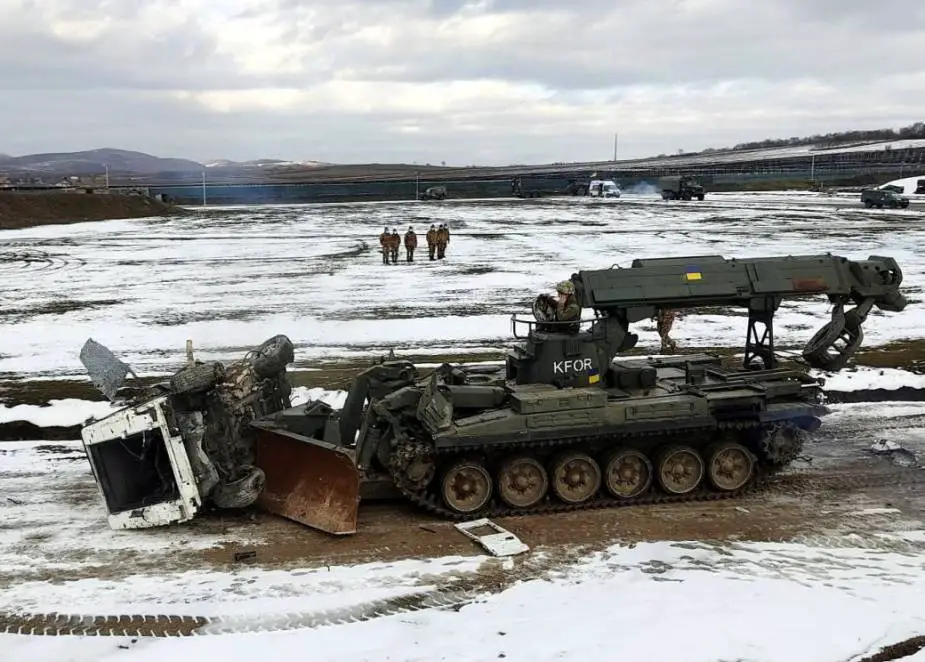Breaking news
Ukrainian army uses IMR-2 engineering vehicles in KFOR exercise.
A contingent of the Ukrainian army took part in joint maneuvers on the collective security of the NATO multinational force KFOR. During these exercises, which are taking place in Kosovo with Italians and Moldovans, Ukrainian peacekeepers used IMR-2 engineering vehicles, TopWar.ru reports.
Follow Army Recognition on Google News at this link

IMR-2 engineering vehicle at work during an exercise with KFOR in Kosovo (Picture source: www.facebook.com/JointForcesCommandAFU)
Classes as part of a maneuver unit using explosives and means of initiation were carried out on the territory of the Novo Selo military base. During the exercises, elements of countering hostile groups of protesters, an algorithm for identifying and destroying explosive devices were worked out. Also during the maneuvers, the fighters of the Armed Forces of Ukraine eliminated artificial barriers on the advance routes, using heavy engineering equipment, TopWar.ru reports.
The IMR-2 is a Russian tracked engineering vehicle built on the T-72 main battle tank chassis. IMR stands for Inzhenernaya Mashina Razgrazhdeniya, meaning "Clearing Engineering Vehicle". Development of the IMR-2 began in the 1970s and was completed in the 1980s. Serial production started in 1982. IMR-2 was developed to replace the aging IMR which was built on the basis of a T-54/55 tank. The IMR-2 combat engineering vehicle is in service with the Russian Army and some foreign armies, namely the Ukrainian one. The last version developed is known to be the IMR-2MA.
The turret of the T-72 was replaced with a new rotating multipurpose telescopic crane. The IMR-2 has a bulldozer blade fitted on the front of the hull, which has a V shape and a straight shape and a 200 – 250 m3/h capacity. When not required, the blade is folded upwards. Stone barriers can be cleared at the rate of 280 to 350 meter an hour while trenches and tree barriers can be filled in at the rate of 350 to 400 m3/h. A 12.7 mm NSVT machine gun is mounted on the crew operator/commander cabin, for the self-protection of the vehicle.
The IMR-2 is powered by a multi-fuel water-cooled diesel engine V-84Ms developing 840 hp, the same engine used in the T-72. The IMR-2 can run at a maximum road speed of 50 km/h with a maximum range of 500 km. The IMR-2 uses the same torsion bar suspension as the main battle tank T-72, which consists of six road wheels on each side. This combat engineering vehicle is operated by a 2-man crew.

























